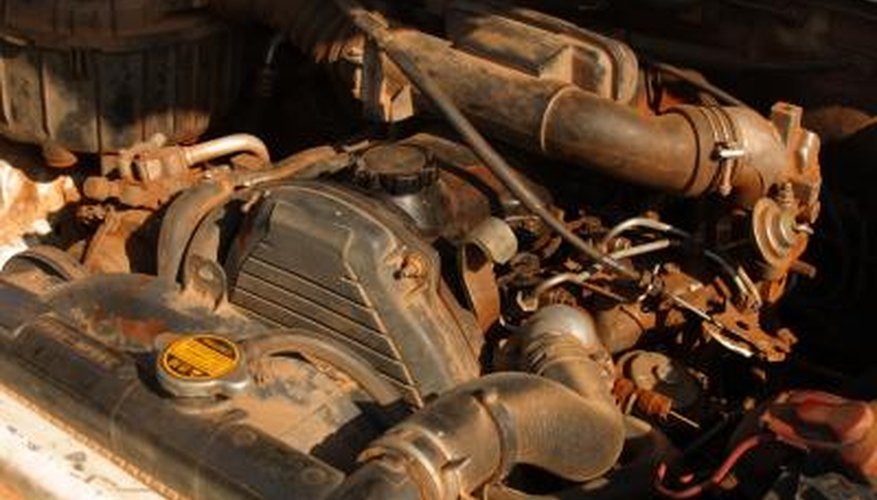Proper belt tension is necessary to ensure the smooth operation and longevity of your belt-driven components. Too loose and the belt may slip or even be thrown off of the pulleys. Too tight and the belt will cause excessive wear on the shaft bearings of the components it is driving. There are several rules of thumb for checking the tension on a belt without using a belt tension gauge.
- Proper belt tension is necessary to ensure the smooth operation and longevity of your belt-driven components.
- Too tight and the belt will cause excessive wear on the shaft bearings of the components it is driving.
Measure the distance from the centre of the alternator pulley shaft to the centre of another pulley that uses the same belt. This will probably be the water pump or the crankshaft.
Lay a straight edge -- like a carpenters level -- across the pulleys, over the belt.
Place the tip of a ruler against the belt, in the middle distance between the pulleys, with the ruler against the straight edge. Push down on the ruler and measure the gap that forms between the belt and the straight edge. If the pulleys are seven-to-eleven inches apart, the belt should move 1/4-inch. If the distance is over 11-inches, the belt should move no more than 1/2 inch.
Adjust the belt by loosening the alternator mounting bolts with a ratchet and socket. The most common problem is that the belt is too loose. Pull the alternator away from the centre of the engine to tighten the belt. Hold the tension with one hand while tightening the bolts. Recheck the measurement.
- Place the tip of a ruler against the belt, in the middle distance between the pulleys, with the ruler against the straight edge.
- Pull the alternator away from the centre of the engine to tighten the belt.
